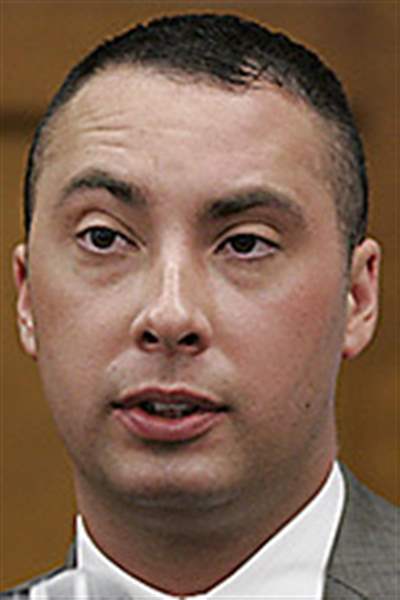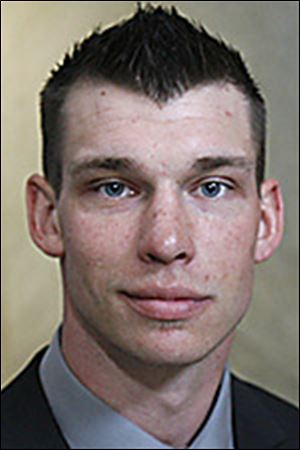
Justices weigh Ottawa Hills case
Ohio’s top court to rule if ex-officer can be liable for gun specification
2/6/2014
White
THE BLADE
Buy This Image

White
COLUMBUS — In a case with implications beyond the Ottawa Hills case before them, several Ohio Supreme Court justices struggled Wednesday with the application of a law written to punish gun-wielding criminals to a police officer using his gun on duty.

McCloskey
But some on the court also seemed to struggle with the question of whether a police officer should be treated differently than anyone else found to have committed the same crime.
The high court is considering the case of former Ottawa Hills Officer Thomas White, who shot and paralyzed motorcyclist Michael McCloskey after a traffic stop May 23, 2009. A Lucas County jury convicted White of felonious assault with a firearm specification that added three years to a seven-year sentence.
However, the Toledo-based 6th District Court of Appeals found the application of the firearm specification to be unconstitutional in this case and ordered a new trial.
“I know the original reasons for the gun spec, and this surely doesn’t fit…,” Justice Paul Pfeifer said. “Common sense tells you the legislature didn’t intend this to be applied to this kind of a situation.”
Justice William O’Neill seemed to agree. “Can you tell me why a police officer carrying a gun, which he is required to do, ends up with an enhanced penalty?” he asked. “I don’t understand that.”
County Assistant Prosecutor Evy Jarrett, however, told the court that while White may have been required to carry a gun, he was not required to use it.
“He’s certainly not required to use it in a means that is later found to be a criminal act,” she said. “Once he has crossed that line into committing felonious assault, the firearm specification can appropriately be applied.”
White’s Columbus attorney, Peter Galyhardt, disagreed. White has maintained that he fired because he feared Mr. McCloskey, who had his back turned to him, was reaching for a weapon. Mr. McCloskey was unarmed.
The impact of the case to police officers beyond Ottawa Hills prompted both the state and national Fraternal Order of Police to get involved. “You have to understand that a police officer acting and discharging his service weapon in the line of duty is just fundamentally different from the armed robber holding up a gas station,” Christina Corl, the unions’ Columbus attorney, said.
Ms. Jarrett, however, argued that the law creating the firearm specification does not exempt police officers. “Isn’t the idea that the law is to apply equally without respect to persons and in this situation, the state looked at the individual without regard to status?” Justice Judith Lanzinger asked. “That’s the question that we need to deal with, whether there should be an exception because of the nature of the individual.”
Chief Justice Maureen O’Connor suggested that, although jurors saw a video of the incident, that didn’t tell them what was going on in White’s head.
“The video’s view is not Officer White’s view,” Mr. Galyhardt said.
The Supreme Court did not issue an immediate ruling. White remains free on $100,000 bond.
Contact Jim Provance at: jprovance@theblade.com or 614-221-0496.